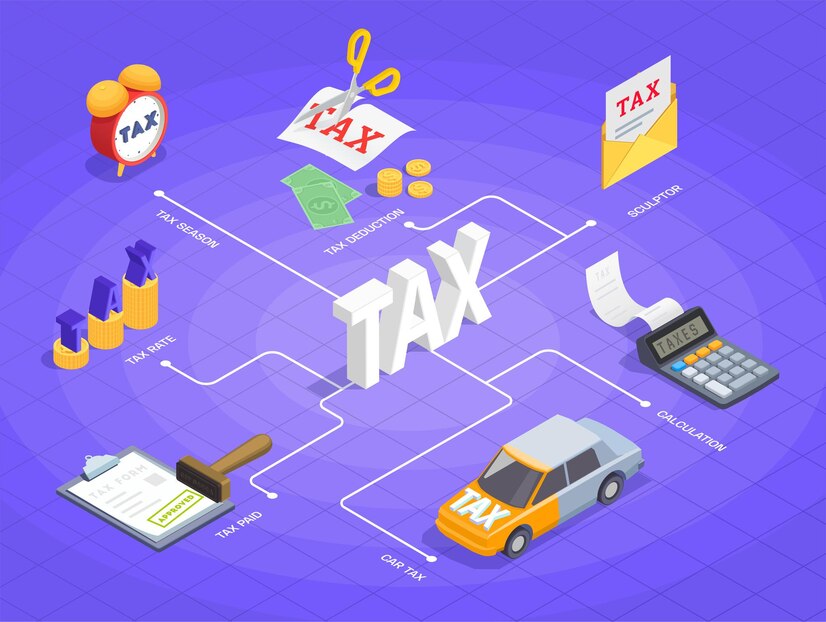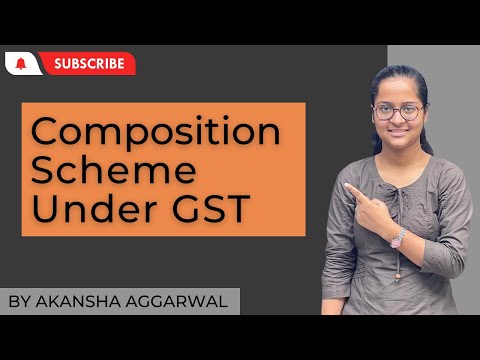Key Takeaways
- Simplified Tax Rates: Offers significantly lower tax rates for eligible small businesses.
- Eligibility Based on Turnover: Targets manufacturers, traders, restaurants, and service providers with specific turnover thresholds.
- Quarterly Filings: Reduces compliance by mandating quarterly instead of monthly GST filings.
- Business Restrictions: Imposes limits such as no inter-state sales and the inability to claim input tax credit (ITC).
- Specific Tax Rates: Sets fixed, category-specific tax rates—1% for traders, 5% for restaurants, and 6% for service providers.
The Goods and Services Tax (GST) Composition Scheme is a simplified tax regime for small taxpayers to reduce their compliance burden. It facilitates tax procedures and permits eligible businesses to pay GST at a fixed rate of turnover. simplifies tax procedures.

This article completely explains the GST Composition Scheme in detail, pointing out its characteristics, regulation framework, eligibility requirements, turnover limits, and scheme benefits.
Attributes of Composition Scheme GST
The Composition Scheme under GST (Goods and Services Tax) is designed as a simplified method of taxation for small taxpayers to ease the compliance burden and reduce the tax liability. It is an optional scheme available to eligible businesses with a turnover below a specified threshold. Here, we’ll explore the key attributes of the GST Composition Scheme:
- Simplified Tax Rate
The scheme offers a fixed, relatively low tax rate for eligible businesses. These rates vary among various taxpayer categories, including manufacturers, merchants, and restaurant proprietors, and are considerably lower than the standard GST rates. The objective is to streamline the tax framework and mitigate the financial strain on small enterprises.
- Unified Scheme Choice and PAN Level Considerations
Businesses opting for the Composition Scheme must apply it uniformly across all their business verticals and branches, under the same PAN (Permanent Account Number). This ensures simplicity in tax administration and compliance for both the taxpayer and the authorities.
- Quarterly Returns and Billing Simplification
Under this scheme, taxpayers are required to file quarterly returns instead of the monthly returns mandated for regular taxpayers.
This helps to lessen the compliance burden, which is a vital impetus for small enterprises to manage their tax filings. Additionally, the invoices issued by composition dealers cannot display the tax separately, simplifying the billing process.
- Eligibility and Business Types
The scheme is available to manufacturers, traders, restaurants (excluding those serving alcohol), and service providers (with specific conditions and a lower turnover threshold). This makes it accessible to a wide range of small businesses across various sectors.
- Reverse Charge Transactions
Composition dealers are liable to pay tax under reverse charge mechanism (RCM) for purchases from unregistered dealers. This means that the tax must be paid directly to the government, unlike the regular input tax credit mechanism available to other taxpayers.
Understanding the Composition Scheme GST Rules and Composition Scheme GST Turnover Limit
The turnover limit for the GST Composition Scheme plays a critical role in determining eligibility. It is important for businesses to monitor their turnover closely to ensure they remain eligible for the scheme.
Exceeding the turnover limit requires the business to switch to the regular GST regime from the next financial year, which involves detailed invoice-wise reporting and allows for the claiming of ITC.
Threshold for Service Providers
The GST (Goods and Services Tax) Composition Scheme in India has distinct thresholds and conditions for different categories of businesses, including service providers, manufacturers, traders, and restaurants.
Differentiation is designed to accommodate the varying scales and operational models across these sectors. Here’s a concise overview of the threshold for service providers and the conditions for manufacturers, traders, and restaurants under the GST Composition Scheme:
Threshold for Service Providers:
- Turnover Limit: The eligibility threshold for service providers to opt for the Composition Scheme is set at Rs. 50 lakhs. This is a notable distinction, given that the threshold for other categories of businesses is higher.
- Tax Rate: Service providers who opt for the Scheme are subjected to a GST rate of 6% (comprising 3% CGST + 3% SGST), which is intended to simplify their tax compliance while offering a lower tax burden compared to standard GST rates.
Manufacturers, Traders, and Restaurants
For these categories, the GST Composition Scheme offers a unified threshold with tailored tax rates:
- Turnover Limit: The eligibility threshold for manufacturers, traders, and restaurants is Rs. 1.5 crores for most states. For special category states, typically northeastern states, Himachal Pradesh, Uttarakhand, and Jammu & Kashmir, the limit is Rs. 75 lakhs.
- Tax Rates
- Manufacturers: The GST rate for manufacturers under the Composition Scheme is 2% (1% CGST + 1% SGST).
- Traders: Traders, including retailers and wholesalers, are subjected to a GST rate of 1% (0.5% CGST + 0.5% SGST).
- Restaurants: Restaurants that do not serve alcoholic drinks can avail of a GST rate of 5% (2.5% CGST + 2.5% SGST) under the scheme.
Key Conditions and Restrictions
- Inter-State Supplies: Businesses opting for this Scheme are restricted from making inter-state supplies. All sales must be conducted within the same state or union territory.
- Input Tax Credit (ITC): One of the major conditions of this scheme is that participants cannot claim ITC on their inputs, which could impact overall cost considerations for some businesses.
- Billing and Documentation: Entities under this Scheme cannot issue tax invoices, which means they cannot charge GST to their customers. Instead, they issue a bill of supply.
- Quarterly Returns: Instead of the monthly returns required under the regular GST regime, participants in this scheme are required to file quarterly returns, simplifying the compliance process.
Existing Registered Entities

Existing entities already registered under the GST (Goods and Services Tax) have the option to opt for this scheme, provided they meet the eligibility criteria set forth for the scheme.
Eligibility to Opt-In
- Turnover Threshold: Existing entities must ensure their annual turnover does not exceed Rs. 1.5 crores in the preceding financial year (Rs. 75 lakhs for special category states) for manufacturers, traders, and restaurants. For service providers, the threshold is Rs. 50 lakhs.
- Compliance with Conditions: Entities must comply with all the conditions of this scheme, such as not engaging in inter-state supplies, not supplying non-taxable goods, and not selling through e-commerce platforms that require the collection of tax at source.
Process for Opting In
- Filing an Intimation: Existing registered entities wishing to opt for the Composition Scheme must file an intimation in Form GST CMP-02, electronically, on the GST portal, before the beginning of the financial year for which they wish to opt into the scheme.
- Statement of Stock: Along with the intimation, they must also furnish a statement in Form GST ITC-03 within 60 days. This form declares details of the stock and inputs contained in semi-finished or finished goods and capital goods for which input tax credit (ITC) has been availed. Since entities under this Scheme cannot claim ITC, this step ensures that any previously claimed credits are reversed.
Considerations for Existing Registered Entities
- No ITC: Once opted into the Composition Scheme, businesses cannot claim input tax credit on their purchases, which is a significant shift from the regular GST regime. Entities need to evaluate the financial impact of this change on their operations.
- Tax Payments and Filings: Entities under this scheme are required to pay tax at a prescribed percentage of their turnover quarterly and file quarterly returns (GSTR-4) and an annual return (GSTR-9A), simplifying the tax filing process compared to the monthly filings required under the regular regime.
- Transition Impacts: The transition to the Composition Scheme may have implications on pricing, cash flow, and profitability. Since businesses cannot charge GST to their customers, they need to absorb the tax costs, which could impact their pricing strategies.
Exiting the Composition Scheme
Entities that wish to exit the Composition Scheme and return to the regular GST regime can do so by filing Form GST CMP-04. This may be necessary if the business exceeds the turnover threshold or wishes to engage in activities not permitted under the Composition Scheme, such as inter-state sales or e-commerce.
Key Features of GST Composition Scheme

The GST Composition Scheme offers a simplified tax framework for small businesses, aiming to reduce the burden of compliance and facilitate easier tax payments. This scheme is particularly beneficial for small taxpayers who find the regular GST compliance requirements cumbersome or challenging.
Here are the key features that define the GST Composition Scheme:
- Simplified Tax Payment at Reduced Rates
Businesses enrolled in the Composition Scheme benefit from paying GST at reduced rates, significantly lower than the standard rates under the regular GST system. These rates are fixed and depend on the type of business:
- Manufacturers and traders pay 1%,
- Restaurants not serving alcohol pay 5%,
- Service providers (a more recent inclusion) pay 6%.
The reduced rates aim to lessen the financial burden on small businesses and simplify the process of calculating tax liability.
- Quarterly Tax Payments and Filings
Unlike the regular GST regime that requires monthly tax filings, businesses under the Composition Scheme are required to file their GST returns on a quarterly basis. This reduced frequency of filings helps in lowering the administrative overhead for businesses, making it easier for them to comply with tax regulations.
- No Requirement to Maintain Detailed Records
The Composition Scheme also offers the benefit of simplified record-keeping. Businesses are not required to maintain detailed transaction records as required under the regular GST regime. This simplification further reduces the compliance burden, saving time and resources for small businesses.
- No ITC Entitlement
One of the trade-offs for the simplified compliance and reduced rates under the Composition Scheme is that businesses are not entitled to claim Input Tax Credit (ITC). This means they cannot deduct the GST paid on their inputs from the GST payable on their sales. While this simplifies tax calculations and filings, it may increase the overall cost of inputs for the business.
Registration Procedure Under the Composition Scheme
The registration procedure for the GST Composition Scheme is streamlined and straightforward, designed to facilitate easy enrollment for eligible small businesses. Here’s a concise overview of the steps involved:
- Check Eligibility: Ensure your business meets the turnover criteria and other conditions set for the Composition Scheme.
- Login to the GST Portal: Access the GST portal (www.gst.gov.in) using your existing GSTIN (GST Identification Number).
- File Form GST CMP-02: Navigate to the services menu and opt-in for the Composition Scheme by filing GST CMP-02 Form, declaring your intention to adopt the scheme. This should be done before the beginning of the financial year for which you wish to opt in.
- Form GST CMP-04 (if applicable): If you’re already registered under the GST and wish to switch to the Composition Scheme during the financial year, you may need to file Form GST CMP-04.
- Issue a Bill of Supply: Once registered under the Composition Scheme, you are required to issue a bill of supply instead of a tax invoice for all sales, as you cannot charge GST to your customers.
- Comply with Scheme Conditions: Adhere to the scheme’s conditions, including no interstate sales, no e-commerce sales, and the payment of tax at prescribed rates without claiming input tax credit.
Filing Returns Under the GST Composition Scheme

Filing returns under the GST Composition Scheme is simplified to ease the compliance burden for small businesses. Here’s a brief overview of the return filing process:
- Quarterly Returns: Businesses enrolled in the Composition Scheme are required to file GST returns quarterly using Form GSTR-4. This form captures consolidated details of total sales, tax paid at the composition rate, and invoice-level purchase details.
- Annual Return: In addition to quarterly returns, businesses must also file an annual return using Form GSTR-9A. This return provides a comprehensive summary of the quarterly returns filed during the financial year.
- Due Dates: The due date for filing the quarterly GSTR-4 is the 18th of the month following the end of the quarter. The deadline for filing the annual GSTR-9A is December 31st of the following fiscal year.
- Tax Payment: The 18th day of the month following the quarter is the deadline for paying any taxes owed. Payment is made alongside the GSTR-4 filing, based on the turnover and the applicable composition rate.
- No Input Tax Credit: Composition scheme taxpayers cannot claim input tax credit, and accordingly, they do not need to report input tax credit details in their returns.
Discover the Benefits of the Composition Scheme
The scheme significantly reduces compliance costs and efforts and many more benefits, making it an attractive option for small businesses.
| Benefit | Description |
|---|---|
| Simplified Tax Rates | Lower tax rates compared to the standard GST rates, reducing the tax burden. |
| Quarterly Return Filing | Requires filing returns only once every quarter, simplifying compliance. |
| Simplified Record-Keeping | There is no need to maintain detailed transaction records, easing the administrative load. |
| No Input Tax Credit (ITC) | While ITC cannot be claimed, it simplifies tax calculations and filings. |
| Reduced Compliance Costs | Lower compliance obligations lead to cost savings for small businesses. |
| Ease of Doing Business | Simplified procedures and reduced compliance enhance ease of doing business. |
| Quarterly Tax Payments | Tax payments are made quarterly, aligning with return filing and easing cash flow management. |
Apprehending the Composition Scheme Under GST Rate
The GST Composition Scheme is an alternative, simplified tax framework designed for small taxpayers to ease their compliance burden and reduce tax liability. Here’s a concise understanding of the GST rates under the Composition Scheme:
Manufacturers and Traders: Pay a nominal GST rate of 1%, combining both CGST and SGST/UTGST, on their turnover.
Restaurants Not Serving Alcohol: Subject to a GST rate of 5% on their turnover, making it a favorable option for small food businesses.
Service Providers: A relatively recent inclusion, eligible service providers can opt for the scheme with a GST rate of 6% on their turnover.
Conclusion
The GST Composition Scheme offers a streamlined and cost-effective tax compliance pathway for small businesses. With lower tax rates, simplified filing processes, and fewer record-keeping requirements, it presents an attractive alternative for eligible entities.
However, businesses must weigh the benefits against restrictions like no inter-state sales and the inability to claim Input Tax Credit. Ultimately, the scheme aims to reduce the GST compliance burden, making it a viable option for small taxpayers seeking to simplify their tax obligations and focus on their core business activities.
💡Request a demo and discover how a business payment app PICE can transform and help you to mange all your business payments with credit card and from one single dashboard.
FAQs
Can I opt for the composition scheme if I am engaged in interstate supplies?
No, you cannot opt for the GST Composition Scheme if you are engaged in interstate supplies of goods. The scheme is designed for businesses that operate within their own state, as it aims to simplify tax compliance for small taxpayers. Engaging in interstate supplies disqualifies you from this scheme, as it requires businesses to deal only in intrastate transactions to maintain the simplified tax structure.
Can I claim input tax credit under the composition scheme?
No, businesses registered under the GST Composition Scheme are not eligible to claim Input Tax Credit (ITC). This limitation is part of the trade-offs for benefiting from lower tax rates and simplified tax filing procedures offered by the scheme. As a result, businesses must treat the GST paid on their inputs as an expense, which cannot be recovered through tax credits.
Is it mandatory to opt for the composition scheme if I am eligible?
No, it is not mandatory to opt for the GST Composition Scheme even if you are eligible. The scheme is optional and primarily benefits small businesses that prefer simpler compliance and reduced paperwork. However, it comes with certain restrictions, such as no interstate sales and no ability to claim input tax credits. Businesses should evaluate their operations and the advantages and limitations of the scheme to determine if it aligns with their needs.
Can service providers opt for the composition scheme?
Yes, certain service providers can opt for the GST Composition Scheme. Specifically, this option was extended to service providers with an annual turnover of up to ₹50 lakh, allowing them to benefit from a simplified tax process and lower tax rates. Eligible service providers can pay GST at a rate of 6% (3% CGST + 3% SGST). This inclusion aims to reduce the compliance burden on small service businesses and make the tax system more inclusive.
How do I opt for the Composition Scheme?
To opt for the GST Composition Scheme, you must file Form GST CMP-02 with the GST portal, indicating your decision to enter the scheme. This should be done at the beginning of the financial year for which you want to adopt the scheme. Additionally, you must file Form GST ITC-03 within 60 days to declare and pay tax on your input tax credit and stock. It’s essential to ensure that you meet all eligibility criteria before opting in, as there are specific restrictions and conditions associated with the scheme.








